

Land Art Generator has announced the winners of the 2018 LAGI Melbourne design competition! Out of the 25 shortlisted entries, “Light Up” by locally based NH Architecture won first place with a $16,000 cash prize. Second place went to “Night & Day, a Hydro-Solar Generator” by Seattle's Olson Kundig, who will receive $5,000. Finally, a third place/special mention went to “Swings” by Lu Chao and Weng Shenxia.
Taking place in cities worldwide, LAGI competitions seek inventive, large-scale works of public art that produce clean energy. In this latest edition, entrants had to design for St. Kilda Triangle in Melbourne. Although there is no guarantee that any of the projects will be realized, “public support may lead to their incorporation as a part of the larger co-design process currently underway for the St. Kilda Triangle site”, LAGI says.
Check out the winning entries below.
First prize: “Light Up” by NH Architecture

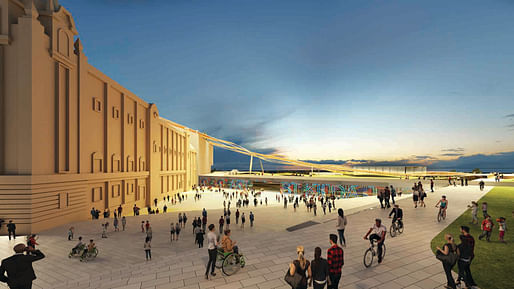
Project description: “‘Light Up’ is a lightweight tensile structure and urban planning scheme that captures energy from 8,600 efficient, flexible solar photovoltaic panels that create light-filtered shade over Jacka Boulevard. Additional energy is harnessed when the undulating structure waves in the wind and from the roots of plants with microbial fuel cells.
NH Architecture principal Dean Boothroyd says they sought to honor St Kilda’s longstanding creative tradition. They also wanted to ‘maximize the public realm’ without disturbing views. Team leader Martin Heide says that creating a buildable design with a high return on investment was central to their approach: ‘We used components that are on the market, that are tested, and which connect in a way that makes the design feasible’. He added that the team was particularly excited to join a project that enjoys such robust support from various stakeholders—including the local community, City of Port Phillip Council, and the State.”
Second prize: “Night & Day: St Kilda Hydro-Solar Generator” by Olson Kundig
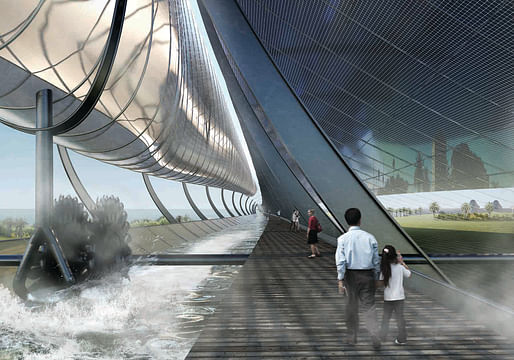

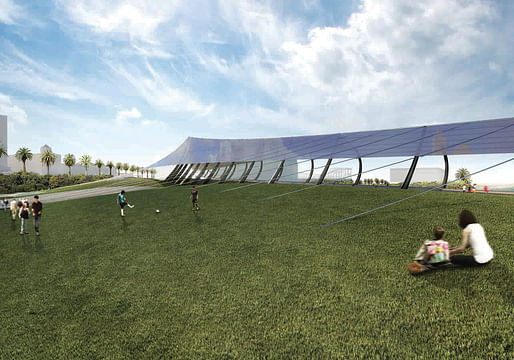
Project description: “Olson Kundig partner Kevin Kudo-King says ‘Night & Day’ is a departure from the firm’s normal work in that visitors become part of the experience of generating renewables. Night & Day is designed to improve the connection between The Esplanade and Port Phillip Bay, in addition to providing a sophisticated educational amenity that is bound to draw scores of visitors.
During daylight hours, energy produced by a 5,400 m2 photovoltaic (PV) solar sail is used to directly power homes while also safely pumping bay water into a suspended hydro battery vessel. After sunset, water is released through two Pelton turbines, transforming the kinetic movement of water into electricity through a generator—a proven technology that is already used at the utility scale, according to Kudo-King.”
Third place/special mention: “Swings” by Lu Chao, Weng Shenxia

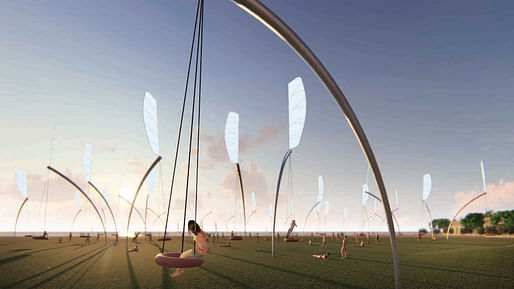
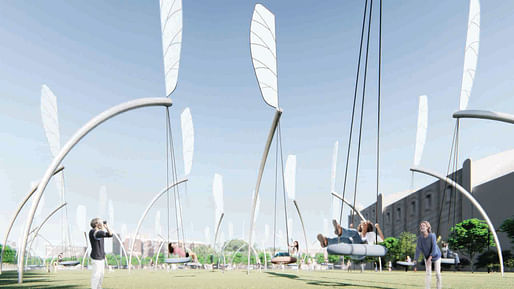
Project description: “When the sea breeze blows through the bustling Port Phillip Bay, it drives a group of huge swings into gentle sway. People come to watch and participate from the neighborhood, the beach, the Palais Theatre, and Luna Park.
During the day, the blades made of solar panels convert the sun’s energy into electricity, while wind and human energy collaborate to provide even more. When the sun has set and the visitors have gone home, the swings continue to sway gently in the sea breeze, glowing softly and providing a steady stream of electricity throughout the night.
Working in harmony with nature, Swings presents no threat to birds and takes up little ground space, allowing plenty of room for people to engage in various activities throughout the site.
The top wing blade takes different positions as it generates power through movement. At first it sits perpendicular to the wind direction. As it catches the wind, the blade rotates and the soft rubber seat below sways to the side. With the seat at 15 degrees from center, the blade is rotated parallel to the wind direction, allowing it to slice through the wind and return the swing.
This movement can be generated by the wind alone or driven more quickly with human interaction. When the seat swings to the lowest point, the blade turns, receiving even more wind power. The blade’s rotation is managed by means of a repurposed mechanical recirculating ball system—like those used in the power steering assemblies of trucks and off-road vehicles—which is connected to a generator that converts mechanical energy into electricity.
As visitors contribute to producing a flow of electricity, Swings turns human activity and joy into a sustainable energy source.”
All images courtesy of 2018 LAGI Melbourne competition.
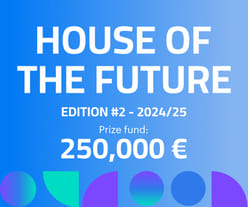
250,000 € Prize / HOUSE OF THE FUTURE 2024/25
Register by Wed, Apr 30, 2025
Submit by Mon, Jun 2, 2025

Re:Form – New Life for Old Spaces
Register by Wed, Jan 22, 2025
Submit by Tue, Sep 2, 2025

Ceramics of Italy Tile Competition
Register/Submit by Fri, Feb 14, 2025

The Last Nuclear Bomb Memorial / Edition #5
Register by Thu, Jan 16, 2025
Submit by Wed, Feb 19, 2025
No Comments